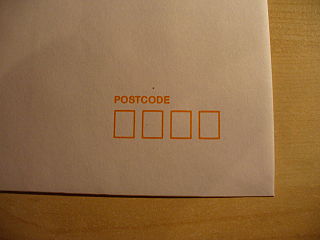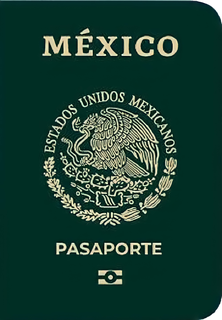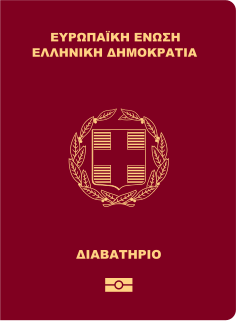Related Research Articles

The Jervis Bay Territory is an internal territory of Australia. It was established in 1915 from part of New South Wales, in order to enable the landlocked Australian Capital Territory (ACT) access to the sea.

In general, a rural area or a countryside is a geographic area that is located outside towns and cities. The Health Resources and Services Administration of the United States Department of Health and Human Services defines the word rural as encompassing "...all population, housing, and territory not included within an urban area. Whatever is not urban is considered rural." Typical rural areas have a low population density and small settlements. Agricultural areas and areas with forestry typically are described as rural. Different countries have varying definitions of rural for statistical and administrative purposes.

Myanmar is divided into twenty-one administrative subdivisions, which include 7 regions, 7 states, 1 union territory, 1 self-administered division, and 5 self-administered zones. Following is the table of government subdivisions and its organizational structure based on different regions, states, the union territory, the self-administered division, and the self-administered zones:

Local government is the third level of government in Australia, administered with limited autonomy under the states and territories, and in turn beneath the federal government. Local government is not mentioned in the Constitution of Australia, and two referendums in 1974 and 1988 to alter the Constitution relating to local government were unsuccessful. Every state/territory government recognizes local government in its own respective constitution. Unlike the two-tier local government system in Canada or the United States, there is only one tier of local government in each Australian state/territory, with no distinction between counties and cities.

The Department of Immigration and Border Protection (DIBP) was a department of the Government of Australia that was responsible for immigration, citizenship and border control. It has now been subsumed into the Department of Home Affairs, which combines its responsibilities with a number of other portfolios.

South East Queensland (SEQ) is a bio-geographical, metropolitan, political, and administrative region of the state of Queensland in Australia, with a population of approximately 3.8 million people out of the state's population of 5.1 million. The area covered by South East Queensland varies, depending on the definition of the region, though it tends to include Queensland's three largest cities: the capital city Brisbane; the Gold Coast; and the Sunshine Coast. Its most common use is for political purposes, and covers 22,420 square kilometres (8,660 sq mi) and incorporates 11 local government areas, extending 240 kilometres (150 mi) from Noosa in the north to the Gold Coast and New South Wales border in the south, and 140 kilometres (87 mi) west to Toowoomba.
A working holiday visa is a residence permit allowing travellers to undertake employment in the country issuing the visa to supplement their travel funds. For many young people, holding a working holiday visa enables them to experience living in a foreign country without undergoing the usual costly expenses of finding work sponsorship in advance or going on expensive university exchange programmes.

The Regions of Queensland refer to the geographic areas of the Australian state of Queensland. Due to its large size and decentralised population, the state is often divided into regions for statistical and administrative purposes. Each region varies somewhat in terms of its economy, population, climate, geography, flora and fauna. Cultural and official perceptions and definitions of the various regions differ somewhat depending on the government agency or popular group by which they are being applied.

The visa policy of Australia deals with the requirements that a foreign national wishing to enter Australia must meet to obtain a visa, which is a permit to travel, to enter and remain in the country. A visa may also entitle the visa holder to other privileges, such as a right to work, study, etc. and may be subject to conditions.

The states and territories are federated administrative divisions in Australia, ruled by regional governments that constitute the second level of governance between the federal government and local governments. States are self-governing polities with incomplete sovereignty and have their own constitutions, legislatures, departments, and certain civil authorities that administer and deliver most public policies and programmes. Territories can be autonomous and administer local policies and programmes much like the states in practice, but are still constitutionally and financially subordinate to the federal government and thus have no true sovereignty.
Working holidays in Australia is a program that enables eligible young people aged between 18 and 30 years to visit Australia and to supplement their travel funds through incidental employment. Forms of working holiday visas have existed since January 1975, designed to "promote international understanding by enabling young people to experience the culture of another country."
In the state of New South Wales, Australia, there are many areas which are commonly known by regional names. Regions are areas that share similar characteristics. These characteristics may be natural such as the Murray River, the coastline, or the Snowy Mountains. Alternatively, the characteristics may be cultural, such as a viticulture land use. New South Wales is divided by numerous regional boundaries, based on different characteristics. In many cases boundaries defined by different agencies are coterminous.

Postcodes in Australia are used to more efficiently sort and route mail within the Australian postal system. Postcodes in Australia have four digits and are placed at the end of the Australian address, before the country. Postcodes were introduced in Australia in 1967 by the Postmaster-General's Department and are now managed by Australia Post, Australia's national postal service. Postcodes are published in booklets available from post offices or online from the Australia Post website.

Visa requirements for Mexican citizens are administrative entry restrictions by the authorities of other states placed on citizens of Mexico. As of 11 January 2022, Mexican citizens had visa-free or visa on arrival access to 159 countries and territories ranking the Mexican passport 24th in terms of travel freedom according to the Henley Passport Index.
Visa requirements for Australian passport holders are administrative entry restrictions by the authorities of other states placed on citizens of Australia entering with an Australian passport.

Visa requirements for Finnish citizens are administrative entry restrictions by the authorities of other states placed on citizens of Finland. As of 13 April 2021, Finnish citizens had visa-free or visa on arrival access to 190 countries and territories, ranking the Finnish passport 4th in terms of travel freedom according to the Henley Passport Index. Additionally, the World Tourism Organization also published a report on 15 January 2016 ranking the Finnish passport 1st in the world in terms of travel freedom, with the mobility index of 160.

Visa requirements for Greek citizens are administrative entry restrictions by the authorities of other states placed on citizens of Greece. As of 13 April 2021, Greek citizens had visa-free or visa on arrival access to 186 countries and territories, ranking the Greek passport 8th in terms of travel freedom according to the Henley Passport Index.

Visitors to Thailand must obtain a visa from one of the Thai diplomatic missions unless they come from a visa-exempt country or a country whose citizens are eligible to obtain visas on arrival.
In South Australia, one of the states of Australia, there are many areas which are commonly known by regional names. Regions are areas that share similar characteristics. These characteristics may be natural such as the Murray River, the coastline, desert or mountains. Alternatively, the characteristics may be cultural, such as common land use. South Australia is divided by numerous sets of regional boundaries, based on different characteristics. In many cases boundaries defined by different agencies are coterminous.
References
- ↑ "Regional Australia". Department of Home Affairs (Australia). Retrieved 14 February 2019.